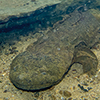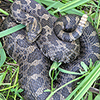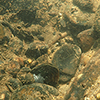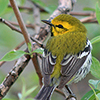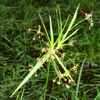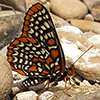Conservation Science
Protecting Pennsylvania’s Plants and Animals
Species at Risk:
Bats
Pennsylvania is home to a number of bat species that fill a unique niche as predators of nighttime flying insects. Unfortunately, populations of hibernating bats have undergone drastic declines due to a fungal disease called white-nose syndrome (WNS). The Western Pennsylvania Conservancy is working closely with conservation partners to conserve these small, winged mammals.
Below are some of the bat species in our region that are at risk:
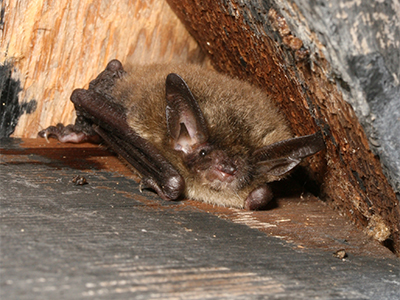
Northern long-eared bat
(Myotis septentrionalis)
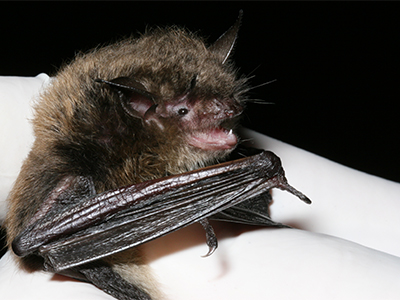
Little brown bat
(Myotis lucifugus)
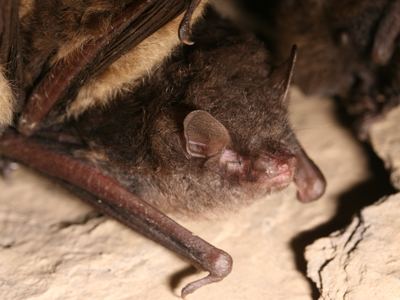
Indiana bat
(Myotis sodalis)
Habitat
All of Pennsylvania’s bat species are insectivores. A single bat consumes thousands of insects each night, which helps to keep our insect populations under control. During daylight hours, bats can be found roosting in an assortment of structures ranging from cavernous snags deep within our northern forests to residential attics in our most populated areas.
During summer months, bats roost in a variety of natural and man-made structures. Some species, such as the northern long-eared bat, tend to be more solitary and prefer natural roosts. More gregarious species, such as the little brown bat and the Indiana bat, roost in larger colonies. These congregations, known as maternity colonies, are typically composed of females rearing pups.
While some species of bats are year-round residents, others migrate south during the winter. Those that do stay, hibernate in caves, mines and tunnels.
Hibernating bat species in Pennsylvania seek refuge in places that provide moderate conditions during colder months, called hibernacula. Natural and man-made hibernacula play a crucial role in the life history of these bats. In Pennsylvania, the vast majority of natural hibernacula are found as solutional caves that form in carbonite rock as it is dissolved by water. Some underground mines and abandoned transportation tunnels also provide suitable habitat for bat hibernation.
In Pennsylvania, bats begin migrating to hibernacula as early as September. Known as the fall swarm, it’s an important period of social interaction when bats congregate near the entrance of the hibernacula. During this time, bats put on their final fat stores and breed.
Once temperatures begin to drop and prey becomes scarce, bats begin to descend into the hibernacula for the duration of winter. Different species can be found throughout a single hibernacula based upon their choice of microclimate. Bats begin to emerge from hibernation in early spring, though at different time intervals depending on the species and sex of the bat.
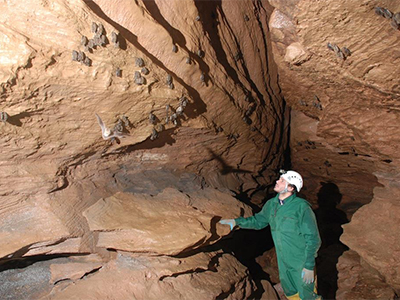
Photo by John Chenger, Bat Conservation and Management
Threats
Habitat Loss and Disturbance
Mature trees, snags and tree species with exfoliating bark provide important summer habitat for bats. Removal of these trees reduces the amount of natural roosts from the landscape, decreasing the summer habitat necessary for roosting and rearing pups. These same forests also provide key foraging areas.
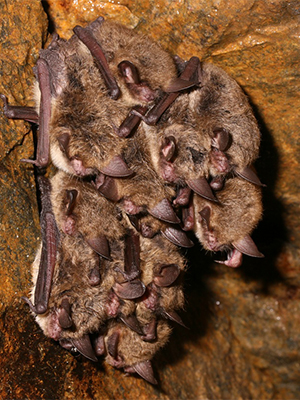 Both recreational and commercial caving can disturb bats during hibernation. When awakened from their deep sleep, bats begin to burn their stored fat more rapidly and can starve if they do not retain enough fat until spring. Hibernacula should not be disturbed during the winter months, and should be gated when necessary.
Both recreational and commercial caving can disturb bats during hibernation. When awakened from their deep sleep, bats begin to burn their stored fat more rapidly and can starve if they do not retain enough fat until spring. Hibernacula should not be disturbed during the winter months, and should be gated when necessary.
White-Nose Syndrome
Pennsylvania’s hibernating bat populations have undergone drastic declines due to an introduced fungus, Pseudogymnoascus destructans (Pd), which causes the disease called WNS. Introduced to the U.S. a decade ago, Pd has no natural controls. Characterized by the white fungus that grows on a bat’s muzzle, WNS produces lesions on its wings, specifically its patagia, and causes bats to awaken from winter hibernation prematurely. Unfortunately, this activity depletes the bat’s limited fat reserves, causing the bats to leave their hibernacula early in a vain attempt to forage for food that is not available. These bats often starve to death.
Unfortunately, the Pennsylvania Game Commission believes that all hibernacula in the commonwealth contain Pd. While WNS research is ongoing, there is no known practical treatment to counter the effects of the disease.
Though populations of some bat species have suffered massive declines, we are finding limited numbers of resilient survivors. These survivors are able to cope with WNS. The hope is that their offspring will be able to do the same. Conservation measures are now aimed at the protection of maternity colonies, so that more offspring might survive and increase bat populations.
Conservation
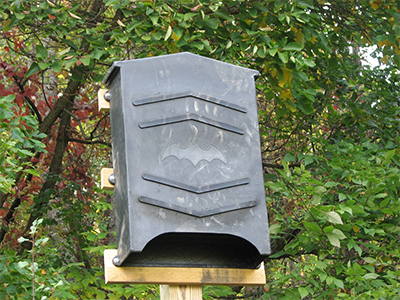
PNHP staff are working with agency partners to help hibernating bats in our region. Using survey data provided by the Pennsylvania Game Commission, we are consistently updating datasets for bat occurrences. We have increased our field survey efforts for bats to help locate WNS survivors. We are also coordinating with partnering agencies on the implementation of a habitat conservation plan.
Bat Boxes
Since 2014, we have installed artificial structures, called bat boxes, throughout Pennsylvania, including on WPC-owned properties. Bat boxes are typically mounted on poles or on the sides of buildings in settings that provide ideal summer roosting habitat.
Bats use large, old hollow trees for breeding and nesting. However, with the removal of old growth forests in the United States in the past century, the natural habitat for bats has diminished. As a result, many bats have taken up residence in tight, warm spaces such as in houses and barns. Where possible, we’re conserving and enhancing forest conditions so bats can return to a natural roosting habitat. Bat boxes are built to mimic that tree habitat and supplement natural roost sites. These boxes also provide bats who have survived white nose syndrome with optimal refuge to raise their young and rest between feeding bouts.
We’ve installed bat boxes on several WPC-owned properties, including:
- Beechwood Farms Nature Reserve in Allegheny County;
- Helen B. Katz and Cussewago Bottom natural areas in Crawford County;
- Sideling Hill Conservation Area in Bedford County;
- Wolf Creek Narrows Natural Area in Butler County;
- Wattsburg Fen Natural Area and West Branch French Creek, Mystic Valley and Lake Pleasant conservation areas in Erie County;
- Bear Run Nature Reserve in Fayette County;
- Plain Grove Fens in Lawrence County;
- Tippery Meadows Natural Area in Venango County.
Our Map of Our Work indicates bat box locations in the Points of Interest/Other layer.
Build your own bat box! Here are instructions from the Pennsylvania Game Commission.
Survey Work and Data Collection
Data collection for bat species of concern is a continuous and ongoing process for PNHP staff and agency partners. Surveys are completed at winter hibernacula and in summering habitat using a variety of techniques. Hibernacula are typically surveyed during the fall, winter and spring. Harp traps, a device used to capture bats without nets, are placed at the entrance of hibernacula to document bats entering and leaving hibernacula during fall and spring.
Winter surveys take place within the hibernacula where biologists meticulously inspect the passages to conduct counts on each species of bat. During summer months, fine meshed nets (known as mist nets) are deployed along foraging corridors, such as hiking trails, forestry roads and streams. Age, sex, reproductive condition, measurements and locational data are collected for each captured bat. Field data are later submitted to our data management staff, which process and incorporate it into Pennsylvania Conservation Explorer.
State Lands Habitat Conservation Plan
In collaboration with partners, PNHP will be assisting with the rollout of a habitat conservation plan for public lands in Pennsylvania, known as the “Forestry Habitat Conservation Plan for Bats on Pennsylvania State Game Lands, State Forests, and State Parks.” The mission of the draft plan is to employ best management practices that combine forest management with bat conservation by appropriately timing forestry practices to minimize harm to bats. The plan will also incorporate bat ecology into forestry operations. Partners include the US Fish and Wildlife Service, PA Game Commission and PA Department of Conservation and Natural Resources.

